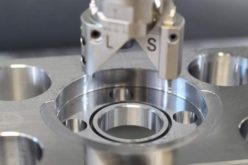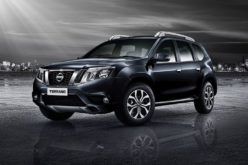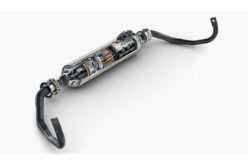Automakers are growing more bullish about the electrification of powertrains by adding hybrid technology to vehicles with internal combustion engines – and for good reason. With future regulations of 95g CO2/km in Europe and 54.5MPG in the United States by 2025 and 2021, respectively, there is immense pressure on the industry to meet these requirements.
Improvements in internal combustion engines have helped close the gap to regulatory targets. Technologies like gasoline direct injection (GDi), variable valve actuation, and common rail diesel have had a significant impact in reducing emissions, and improving fuel economy – and they will continue to do so. Despite this progress, however, the industry still has a big gap to close.
We know electrification allows further engine downsizing by providing more power for intelligent driving. But, to get to these targets, the path there has to be affordable and without the drawbacks that have kept solutions like full hybrids and electric vehicles from selling; cost, range anxiety, lower fuel prices, and performance issues. Because of these drawbacks, analysts predict only two percent of all vehicle sales will be electric by 2025.
So how do we get there in time?
The industry may have to step back and offer a little less hybridization for the next decade in order to lay the foundation for broader acceptance of hybrids and pure electrics in the long term. The answer may be 48-volt, mild hybrids.
48-volt, mild hybrids can serve as a conduit to wider consumer acceptance of full hybrids and, eventually, electric vehicles. The beauty of 48-volt is there is no trade-off of power and performance like there is with today’s 12-volt, start-stop systems. Eliminating this trade-off is the key to broader consumer acceptance of electrified vehicles and to helping car makers bridge the gap between hybrids of today and full hybrids and electric vehicles of tomorrow.
Many of today’s hybrids use 12-volt, stop-start systems that shut off the engine when stopped at a light. But this type of system lacks power when pulling away at a light leaving consumers feeling underwhelmed. To overcome this sluggishness, Delphi’s 48-volt, mild-hybrid system offers 25 percent more torque compared to a 12-volt, stop-start while delivering 50 percent to 70 percent of the fuel-savings benefit of a full hybrid for 30 percent of the cost. This is great for consumers who are still uneasy about paying more for a car that lacks the power and performance they are used to and great for automakers who need to sell large numbers of these vehicles to meet their targets.
“Automakers can take their existing 12-volt, stop-start diesels already on the road and convert those same platforms over to a 48-volt, mild hybrid,” said Mary Gustanki, vice president, Engineering & Program Management for Delphi. “It can be packaged in the same vehicle and the same powertrain system. They are not tearing apart their vehicle designs, which is a huge deal. They are just basically adding a few more components.”
This makes 48-volt, mild hybrids a logical bridge from 12-volt, stop-start to full hybrids. Without this transition automakers would need to completely overhaul their vehicle platforms and thereby their manufacturing sites. Both take time and money, which ultimately get passed on to the consumer.
The latest IHS forecast projects more than 11 million 48-volt vehicles by 2025. There are zero today. That’s a massive volume increase.
About 10 percent of vehicles produced in 2025 will be 48-volt powered, which makes 48-volt, mild hybrids the best value solution.
Car buyers will buy 48-volt, mild hybrids for the added performance and car companies will offer the technology because it gives them a faster and more affordable path to hitting these targets. It’s a win-win for everyone.











